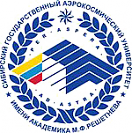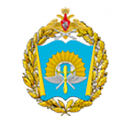Space
In spite of the general fascination with Star Wars and the dreams of inhabiting distant planets, the popularity of the space sector has been declining over the past decade, which is quite logical, since there have been no significant breakthroughs in the area, and with enough urgent problems on Earth. However, the sector is now at a turning point due to the first successes of the private space sector. From a terra incognita open only to intrepid pioneers, space is gradually turning into a commercial sector, which is opening broad opportunities for creating private businesses, e.g. providing support for satellite launches and probes.
Private rocket launches are already cheaper than for traditional rockets. Investors from Silicon Valley are seriously discussing the prospects of Mars colonization. In 2013, they started a global screening of astronauts for a colonization mission to Mars, named Mars One. The screening will continue until 2015. In 2023, after a long training course and a whole year en route, the first crew of four is expected to land on the Red Planet. A new group will arrive every two years and the population of the colony should increase to 20 people by 2035. NASA, together with DARPA, is going to send a manned ship to other star systems within the next century.
The sector intensively uses paperless workflow, building complete digital models of items with all the connections between their components. Digital modelling of behaviour of a whole aircraft is performed in various conditions, as well as interaction between its components under various exposures. An increasingly greater number of components and aggregates are produced without human involvement.
Within the next 20 years, space tourism may become one of the most promising branches of the space industry. In 2007, Virgin Galactic started selling tickets to its SpaceShip Two, a private travel ship, which can fly at altitudes of over 100 km. The programme has not started yet, but should be launched in the near future.
Space may also help industry on Earth, as it can be used for toxic waste disposal, production of high-quality crystals in zero gravity, and mineral resource extraction from the Moon and asteroids. Astrophysical studies show that comets and asteroids are rich in iron, gold, nickel, platinum and other precious metals.
The space conquest opportunities will grow considerably if we succeed in creating affordable technologies to deliver cargoes and people to the orbit, e.g. build a “space elevator” from the Earth surface.
Professions
The profession appears after 2020
Professional services the near-Earth transportation network and is responsible for designing traffic corridors (orbital flights as well as transcontinental flights along ballistic trajectories) and synchronizing launches on Earth (in case of more frequent launches and a manifold increase in the number of orbital objects).
Professional skills and abilities
Systems thinking (ability to define and work with complex systems, including system engineering).
Multilingual and multicultural abilities (fluent English and knowledge of a second foreign language, understanding of the national and cultural context of partner countries, and understanding of job specifics in foreign industries).
Programming IT solutions / Managing complex automated systems / Dealing with artificial intelligence.
Ability to work under high uncertainty and quickly changing conditions (quick decision-making, prompt reaction to changing work conditions, ability to allocate resources and manage personal time spending).
Environmentally conscious thinking
The profession appears after 2020
Specialist engaged in exploring and mining mineral resources on the Moon and asteroids.
Professional skills and abilities
Systems thinking (ability to define and work with complex systems, including system engineering).
Ability to manage projects and processes.
Lean manufacturing, production process management based on permanent focus on removing all types of waste, which implies involving every employee in the business optimization process along with maximum client focus.
Multilingual and multicultural abilities (fluent English and knowledge of a second foreign language, understanding of the national and cultural context of partner countries, and understanding of job specifics in foreign industries).
Programming IT solutions / Managing complex automated systems / Dealing with artificial intelligence.
Ability to work under high uncertainty and quickly changing conditions (quick decision-making, prompt reaction to changing work conditions, ability to allocate resources and manage personal time spending).
The profession appears after 2020
Maintains life support systems in extreme conditions.
Professional skills and abilities
Systems thinking (ability to define and work with complex systems, including system engineering).
Lean manufacturing, production process management based on permanent focus on removing all types of waste, which implies involving every employee in the business optimization process along with maximum client focus.
Multilingual and multicultural abilities (fluent English and knowledge of a second foreign language, understanding of the national and cultural context of partner countries, and understanding of job specifics in foreign industries).
Programming IT solutions / Managing complex automated systems / Dealing with artificial intelligence.
The profession appears after 2020
This specialist studies the behaviour of various biological systems (from viruses to animals and humans) in space (structures, spacecraft, planet bases); studies the physiology and genetic changes of organisms; develops stable space ecosystems for orbital stations, Moon bases and lengthy journeys.
Professional skills and abilities
Systems thinking (ability to define and work with complex systems, including system engineering).
Cross-industry communication skills (understanding of technologies, processes, and market conditions in different related and unrelated sectors).
Ability to manage projects and processes.
Multilingual and multicultural abilities (fluent English and knowledge of a second foreign language, understanding of the national and cultural context of partner countries, and understanding of job specifics in foreign industries).
Programming IT solutions / Managing complex automated systems / Dealing with artificial intelligence.
The profession appears after 2020
Professional developing visiting programmes for near-Earth space (and beyond), orbital complexes, and other space structures (including Moon bases).
Professional skills and abilities
Ability to manage projects and processes.
Multilingual and multicultural abilities (fluent English and knowledge of a second foreign language, understanding of the national and cultural context of partner countries, and understanding of job specifics in foreign industries).
Client focus, ability to address customer requests.
Ability to work with teams, groups and individuals.
The profession appears before 2020
Specialist in designing space structures (stations, satellites, etc.) based on reconstruction and disposal needs. Demand for the profession will arise in the coming years, in connection with more intensive exploitation of near-Earth space and resumption of plans to colonize the Moon and Mars.
Professional skills and abilities
Systems thinking (ability to define and work with complex systems, including system engineering).
Cross-industry communication skills (understanding of technologies, processes, and market conditions in different related and unrelated sectors).
Ability to manage projects and processes.
Lean manufacturing, production process management based on permanent focus on removing all types of waste, which implies involving every employee in the business optimization process along with maximum client focus.
Multilingual and multicultural abilities (fluent English and knowledge of a second foreign language, understanding of the national and cultural context of partner countries, and understanding of job specifics in foreign industries).
Programming IT solutions / Managing complex automated systems / Dealing with artificial intelligence.
Environmentally conscious thinking
Where can i receive basic training
in the specialty?
Bauman Moscow State Technical University
Moscow Aviation Institute (National Research University) (MAI)
Siberian State Aerospace University (SibSAU)
Krasnodar Higher Military Aviation School (Military Institute) named after Hero of the Soviet Union AK Serov
Saint-Petersburg State University of Aerospace Instrumentation (SUAI)
National Research Novosibirsk State University (NSU)
Employers in the Russian Federation
Russian Federal Space Agency Roscosmos
S.P. Korolev Rocket and Space Corporation Energia
Rocket and Space Center Progress
M.F. Reshetnev Information Satellite Systems
Khrunichev State Research and Production Space Center
S. A. Lavochkin Research and Production Association
Do you like the page? Share with friends!




























